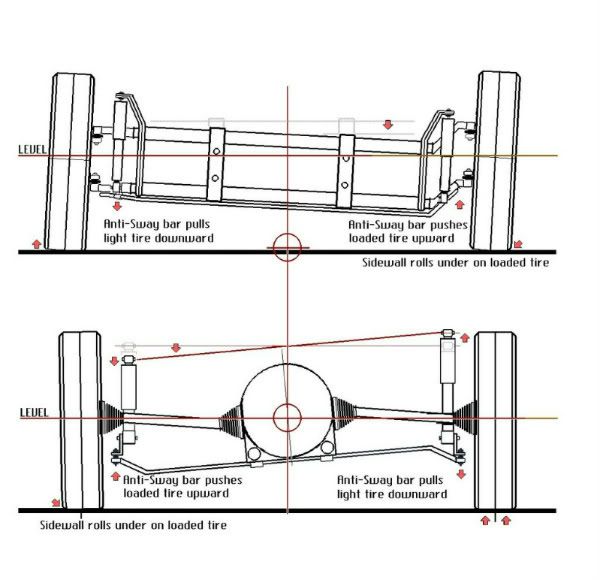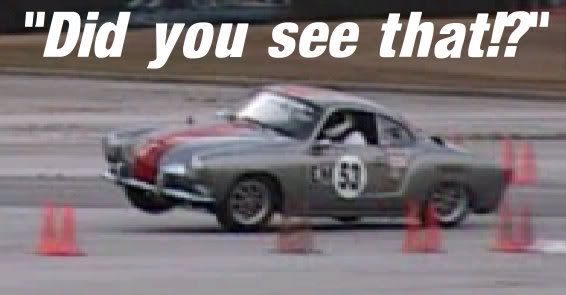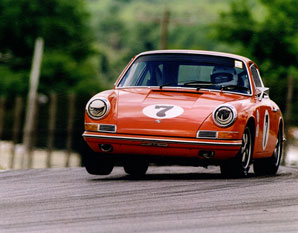
The swaybar (more correctly the "anti-roll" bar) is a commonly misunderstood part. Roll, in this case, means leaning while cornering. Most people know it improves handling, but not why, and don't know when to use a front and rear bar, or what differences swaybar thicknesses and attach points cause.
Originally, neither the Porsche 356 or VW's came from the factory with any kind of anti-roll bar. Porsche did not invent the anti-roll bar, but started to use a front bar on the Speedster in November of 1954. It cut ten seconds off laptimes at one test track.
VW began using it next, on the Ghia, in April 1956. The Bug got it soon after. So, if Porsche knew the engineering behind the anti-sway bar, why didn't they use it earlier? Simple. They originally thought the stiffness of the front torsion bars was enough to fight lean.
By resisting chassis roll, the tires stay planted more upright, weight transfer is more controlled, and the whole car responds better to steering inputs.
One of the less obvious effects of a front bar is it not only fights lean, it actually transfers some cornering loads to the rear wheels. The right front wheel throws its "weight" back to the left rear wheel, and the left front loads the right rear. An "X" effect.
The good news is this makes the whole chassis work better. The bad news is if you don't know this is happening, you can really screw up your cornering as you add other handling parts.
Read that as the average guy should be happy with a front bar only, especially on a swing-axle, and with caution on an IRS rear end.
Adding a rear bar doubles the "X" effect. The rear wheels now exert their cornering loads to the front wheels. Some tuning and balance needs to be employed.
A 19mm front bar, the most common aftermarket size, is a good bar for road or track. Add a 19mm rear bar, and you get a very responsive and sensitive rear end. Your oversteer still exisits, but at higher limits. Stick with a front bar and it's predictible understeer most of the time.
Aftermarket sway bars for the VW are amazingly stiff, compared to what Porsche issued even on its hotrod 911S. You got a couple of milimeters less. The factory knew a rear bar needed to be softer than the front bar.
In fact, the rear bar has the main job of keeping the front wheels on the ground in hard corners. Too stiff a front bar tends to make the Porsche-VW designs lift the unloaded front tire right off the pavement in a high-G turn. Time was, you could stand and watch the 911's lift a front tire and keep it in the air all the way around the infield hairpin at Daytona -- and it would stop spinning!
To plant the front tires, you fight your own front sway bar with a rear sway bar.
On our roadracing '70 Ghia, we run a 19mm front bar and no rear bar at the fast tracks. The faster you go, the less oversteer you want. Fast here means 100+mph curves.
A rear bar is great for autocross. And for street use if you want to cut a corner like a slotcar -- at reasonable street speeds.
FJC

